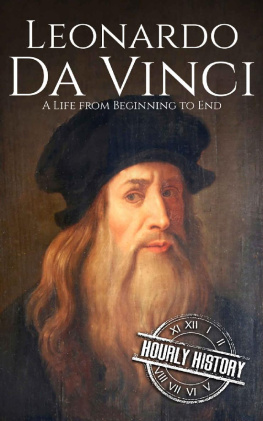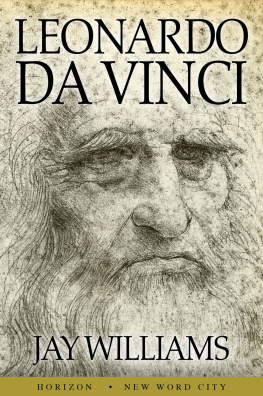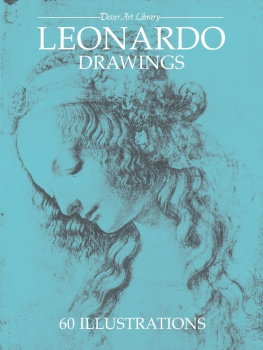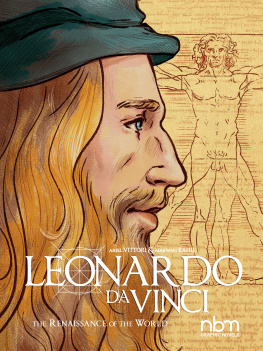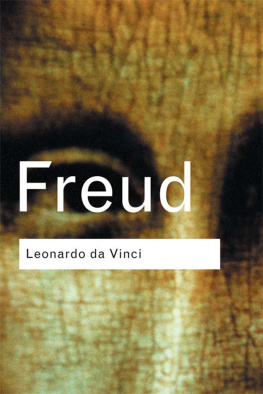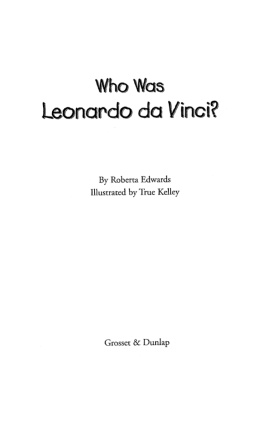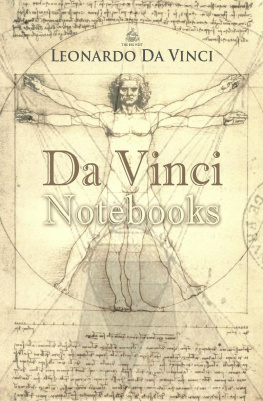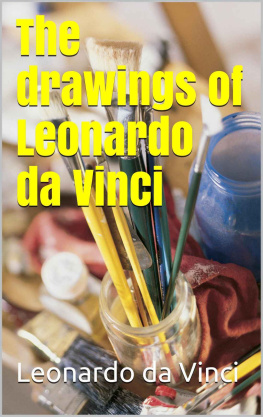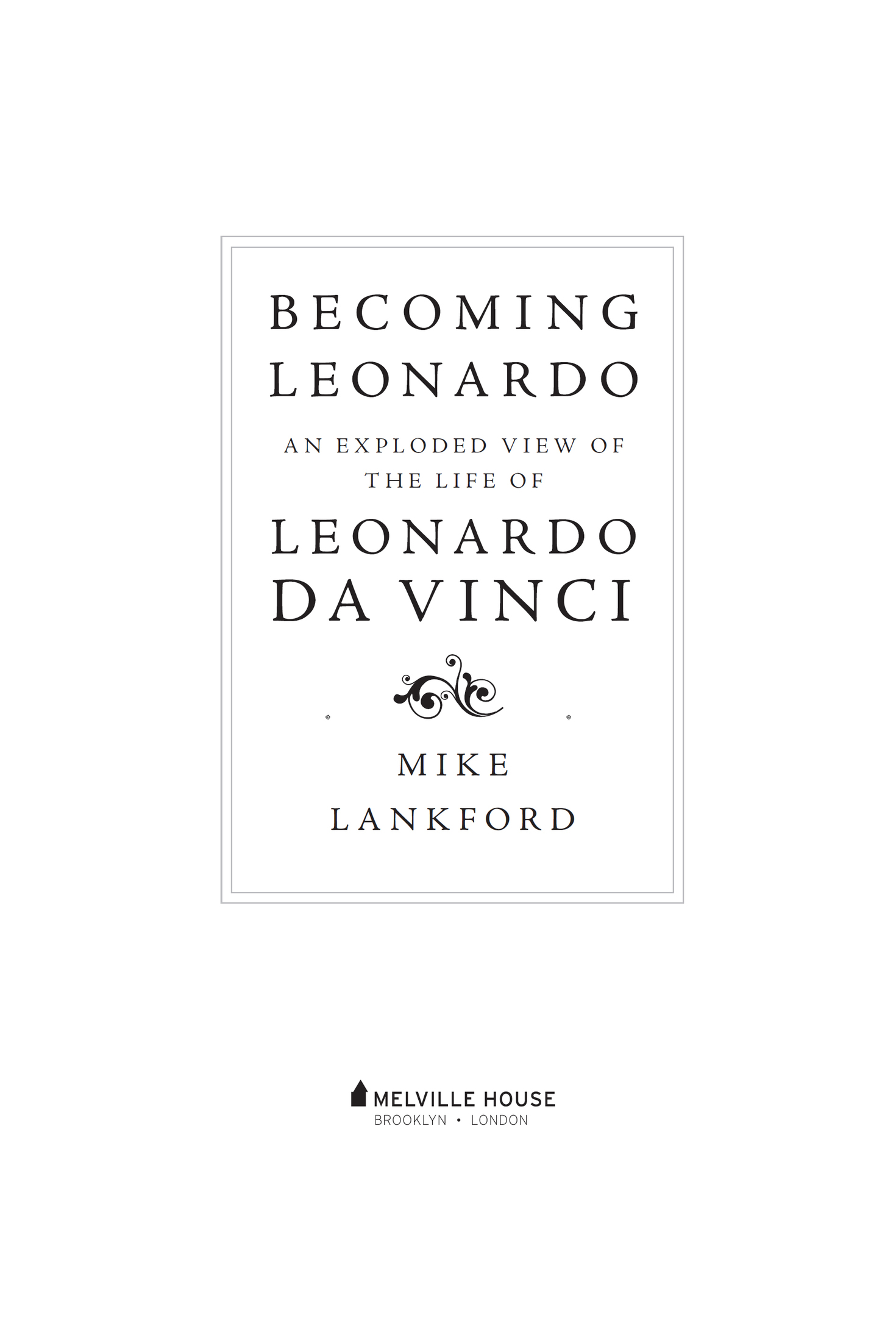Contents
BECOMING LEONARDO
Copyright 2017 by Mike Lankford
First Melville House Printing: March 2017
Melville House Publishing
46 John Street
Brooklyn, NY 11201
and
8 Blackstock Mews
Islington
London N4 2BT
mhpbooks.comfacebook.com/mhpbooks@melvillehouse
Ebook ISBN9781612195964
Library of Congress Cataloging-in-Publication Data
Names: Lankford, Mike, author.
Title: Becoming Leonardo : an exploded view of the life of Leonardo da Vinci / Mike Lankford.
Description: Brooklyn : Melville House, 2017. | Includes bibliographical references and index.
Identifiers: LCCN 2016047737 (print) | LCCN 2016048617 (ebook) | ISBN 9781612195957 (hardback) | ISBN 9781612195964 (ebook)
Subjects: LCSH: Leonardo, da Vinci, 14521519. | Leonardo, da Vinci, 14521519Psychology. | ArtistsItalyBiography.
| BISAC: BIOGRAPHY & AUTOBIOGRAPHY / Artists, Architects, Photographers. | HISTORY / Renaissance. | ART / History / Renaissance.
Classification: LCC N6923.L33 L37 2017 (print) | LCC N6923.L33 (ebook) | DDC 709.2 [B] dc23
LC record available at https://lccn.loc.gov/2016047737
v4.1
a
For Dr. Larry Campbell
There are three classes of people: those who see, those who see when they are shown, those who do not see.
LEONARDO DA VINCI
READER BEWARE: I recommend you keep a legitimate biography alongside this bastard of my brain so as to remain constantly in tune with the truth as it is generally understood. I will provide such a list of recommended biographies at the end. The intent here is to see Leonardo simply as a man sitting across the table covered in ordinary sunlight, absent the halo. Dirty fingernails and all. To view him as he was viewed by others during his own lifetime, albeit through a twenty-first century knothole. I dont think he would approve. Leonardo did not like halos, and he sure didnt like being spied on.
CONTENTS
1352 The Black Death kills 60 percent of the population in Italy. The Little Ice Age continues across Europe, causing widespread famine.
1452 Leonardo is born.
1452 The Second Great Fire of Amsterdam destroys three quarters of the city.
1452 Painter and mosaicist David Ghirlandaio born (d. 1525).
1453 Eruption of Kuwae in the Pacific.
1453 Constantinople falls to the Ottoman Turks.
1453 Hundred Years War ends.
1454 Gutenberg prints his first Bible.
1455 Sculptor Lorenzo Ghiberti dies in Florence (b. 1378).
1455 Sculptor Donatellos Penitent Magdalene installed at Florence Cathedral.
1456 Hurricane sweeps Vinci, Tuscany.
1458 Pitti Palace in Florence begun.
1460 Portuguese explorer Pro de Sintra reaches Sierra Leone.
1461 Sarajevo founded by the Ottomans.
1462 Vlad III, also known as Dracula, attempts to assassinate Mehmed II.
1465 Massive flooding in central and southern China.
1466 Donatello dies in Florence (b. 1386).
1467 The polyalphabetic cipher invented by Leon Battista Alberti.
CHAPTER 1
KING DEATH
Ages 015
MOST OF HIM is lost to us, of course. The timbre of the voice, the thoughts visible in his eyes, the physical gestures when happy or sad, the way he walked, his smell, his hands, the habitual grimace his friends knew all too well but no one bothered to recordall that is lost. When he was young there was no reason to write any of it down, and when he was old he became too hard to describe, too strange. What to do with Leonardo?
Its helpful in terms of myth building to have fewer facts rather than more. Were Leonardo born today wed have hospital records, blood types of both parents, genealogies going back to Charlemagne, not to mention the views of his neighbors there in the tiny tourist town of Vinci. Fortunately, for the sake of romance and myth, we have none of that but for a single scrawled entry in a family ledger by his grandfather Antonio: 1452. There was born to me a grandson, the son of Ser Piero my son, on the 15th day of April, a Saturday, at the 3rd hour of the night. He bears the name Lionardo.
Swaddled and lying there in the straw-stuffed cradle, a couple of early spring flies buzzing his face (one perhaps landing on his lip and beating its wings) that little red baby started life with one large problem: He was, by the rules and customs of the day, illegitimate. Outside the law. His parents were not married. They apparently were not even properly introduced. Traditionally it was thought his mother was a local girl who let the neighboring notarySer Pieroget too close in a dark place. New evidence suggests that Leonardos mother Caterina may have been a house slave brought to Italy from elsewhere. Which means, it might have been rape.
Because of the plague and such massive death, Florencethe city-state that ruled Vinci, the tiny village beside Mount Albano where Leonardo was born and which gave him his namehad permitted the importation of slaves, provided they were infidels and converted immediately to Christianity and took Christian names, most often young women from Turkey and North Africa. Caterina was a popular name and it so happened that a wealthy client of Ser Pieros named Vanni di Niccolo owned a slave named Caterina. Niccolo died in 1451 and as executor of his estate Ser Piero wouldve had to deal with his property, including Caterina. The next year a Caterina appeared in Vinci, pregnant by Ser Piero. Nothing is known of her past.
Which would mean little or nothing but for the evidence of Leonardos fingerprints on a few of his paintings, fingerprints that reveal the same dermatoglyphic structurethat is, the same pattern of loops and whorlsas people of Middle Eastern origin.
If true, it could mean Leonardo grew up not just a bastard son living with a weak claim on family, but of mixed race as well. Not obviously so, as it was not remarked on by Vasari or anyone else, but it wouldve been part of his own identity and well-known while growing up in the village. It meant he was two things, not one. And perhaps later this was even a part of his mysteriousness, something ill-defined about him, something he hid.
And if so, then it suggests two more possibilities. One, that if Caterina had a hand in raising him or saw him frequently, and told him stories, both to entertain him and make him proud, then what kind of stories might those be? Fantastic? Heroic? Self-justifying? Stories from her home country? Or perhaps stories she made up? An important question. What kind of cross-cultural tall tales was the little kid hearing? There was at the time a cult of the Magi which had wisdom coming from the east.
And two, notice that as an adult his sense of fashion seemed rather more Turkish than Italian: the long hair and beard curled, the purple cloak, the rings and such. He rather resembled an Ottoman Pasha out for a stroll. This was a deliberate adult identity that may well have started as youthful fantasy and wishful thinking. Caterina may be the key to understanding Leonardos unique identity in later years, but in truth we have nothing but a few fingerprints and a couple of indirect references to guide us. Much later, in 1503 when he was fifty-one, he made an effort to move to Constantinople, writing to the Sultan Bayezid II and offering his services, all while praising Allah.


